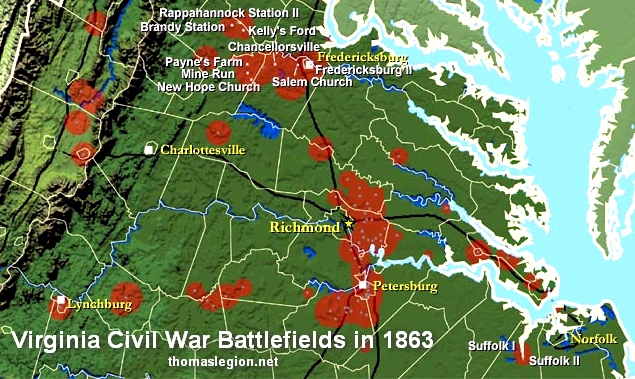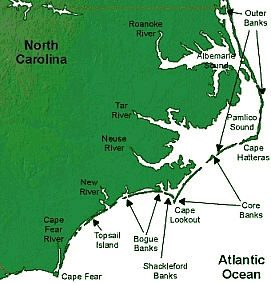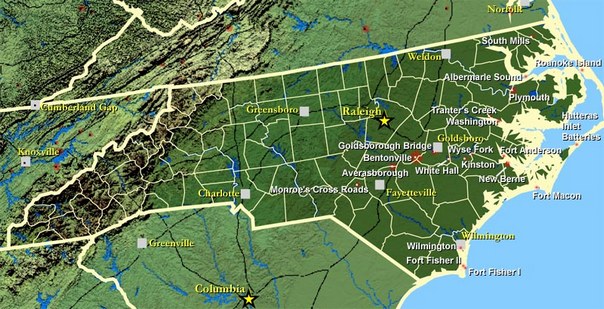
The Unsung Front: James Longstreet’s Critical Tidewater Operations
While the grand narratives of the American Civil War often pivot on the titanic clashes of Gettysburg, Antietam, or Fredericksburg, the true tapestry of conflict was woven with countless threads of logistical struggle, strategic diversion, and the tireless efforts of men fighting far from the spotlight. Among these less-heralded yet profoundly impactful episodes stands Lieutenant General James Longstreet’s Tidewater Operations of early 1863 – a campaign of supply gathering and strategic distraction that, though lacking the dramatic casualty counts of a major battle, proved vital to the Confederacy’s continued survival and critically influenced the outcome of one of Lee’s greatest victories.
Often overshadowed by his controversial role at Gettysburg just months later, Longstreet, Robert E. Lee’s trusted “Old Pete” and commander of the First Corps, found himself in the spring of 1863 engaged in a mission that epitomized the Confederacy’s increasingly desperate struggle for resources. It was a mission that required shrewd calculation, patient execution, and a deep understanding of the strategic chessboard, rather than the headlong charges for which the war is often remembered.
The Confederacy’s Empty Larder

The winter of 1862-63 had been brutal for the Army of Northern Virginia. Following the bloody stalemate at Fredericksburg in December, Lee’s army, encamped around the town, faced not a formidable Union advance but an insidious enemy: starvation. The fertile lands of Virginia had been scoured repeatedly by both armies, leaving a desolate landscape incapable of sustaining the tens of thousands of men and horses that comprised the Confederacy’s primary fighting force. Horses, essential for artillery and cavalry, were dying by the hundreds, and men were on meager rations.
Lee knew he could not contemplate another offensive, let alone defend against a renewed Union thrust, without first replenishing his supplies. The problem was acute: where to find food and forage? His solution was audacious and risky: detach a significant portion of his army, his most reliable corps under his most experienced lieutenant, and send them on a foraging expedition into Union-threatened territory.
“The greatest difficulty I have is to procure food for the men and horses,” Lee wrote to Confederate President Jefferson Davis in February 1863. “Unless we can obtain supplies, we must disband.” It was a stark admission, laying bare the existential threat facing the Confederacy.
Longstreet’s Dual Mission
In February 1863, Longstreet, with two of his veteran divisions – those of Lafayette McLaws and John Bell Hood, roughly 15,000 to 20,000 men – was dispatched southeast from Fredericksburg. His orders were twofold: first, and most critically, to gather provisions from the relatively untouched agricultural regions of southeastern Virginia and northeastern North Carolina. Second, to protect the vital rail lines connecting Richmond to the Carolinas. A third, implicit objective, one that would prove strategically invaluable, was to pose a credible threat to the Union-occupied port of Suffolk, Virginia, and thereby draw away Federal troops from the main front opposite Lee.
Suffolk, a small but strategically vital town at the head of the Nansemond River, had been occupied by Union forces since May 1862. It served as a forward operating base and supply depot for the Union VII Corps, commanded by Major General John J. Peck. From Suffolk, Union forces could threaten the Confederate capital of Richmond from the south, disrupt the vital Petersburg-Weldon Railroad, and facilitate raids into the interior. Peck had fortified the town extensively, transforming it into a formidable defensive bastion with an intricate network of earthworks, redoubts, and rifle pits, protected by the Nansemond River and its tributaries.
The Investment of Suffolk
Longstreet’s troops began their movement in late February, arriving in the vicinity of Suffolk by mid-March. Instead of a direct assault, which would have been costly and likely fruitless given Suffolk’s strong defenses and Longstreet’s primary objective of foraging, he opted for an “investment” – a loose siege designed to pin down Peck’s garrison and create a secure zone for his foraging parties.

His men took up positions along a wide arc stretching for miles, effectively isolating Suffolk from the surrounding countryside. This allowed Longstreet’s cavalry and wagon trains to fan out, systematically collecting corn, hogs, hay, and other foodstuffs from the relatively untouched farms behind the Confederate lines. The process was slow and laborious, but effective.
While the foraging parties worked, the Confederate lines around Suffolk were not entirely quiet. Skirmishes erupted frequently along the Nansemond River, as Union gunboats and Confederate batteries exchanged fire. One notable incident occurred on April 19, when a Union naval expedition attempted to clear the river of Confederate obstruction. McLaws’ division, particularly Barksdale’s Mississippi Brigade, engaged the Union vessels, inflicting casualties and damaging several ships, effectively demonstrating the Confederates’ ability to contest control of the waterway.
Longstreet himself, ever the meticulous planner, spent considerable time reconnoitering Peck’s defenses. He later wrote in his memoirs, “I found the enemy strongly posted and intrenched at Suffolk. My object was not to take Suffolk, but to collect supplies for my army. I felt that if I could hold the enemy in check at Suffolk, while I was gathering supplies, my mission would be accomplished.” This quote perfectly encapsulates the strategic nuance of the operation – it wasn’t about conquest, but about resource management and strategic misdirection.
The Strategic Diversion: A Masterstroke
The second, and perhaps most historically significant, aspect of Longstreet’s operations was its success as a strategic diversion. The very presence of Longstreet’s corps – a significant portion of Lee’s army and his most experienced fighting force – outside Suffolk caused considerable alarm in Washington D.C. and among Union commanders.
Major General Joseph Hooker, the new commander of the Army of the Potomac, was meticulously planning his own offensive against Lee, which would culminate in the Battle of Chancellorsville. Hooker, seeing the threat to Suffolk and potentially Norfolk, began to draw troops away from his main army to reinforce Peck. The IX Corps, under Maj. Gen. John Sedgwick, which had been with Hooker, was ordered south to defend the lower Chesapeake Bay. Elements of the XI Corps were also diverted.
This was precisely what Lee had hoped for. Every Union soldier diverted to Suffolk was one less soldier Hooker would have at Chancellorsville. Longstreet, through his menacing but ultimately non-committal investment of Suffolk, was subtly but powerfully weakening Hooker’s striking arm.
Historians now widely acknowledge that Longstreet’s operations tied down some 25,000-30,000 Union troops – a force comparable in size to Stonewall Jackson’s famous flanking march at Chancellorsville. While Jackson delivered the tactical knockout blow, Longstreet’s efforts prevented Hooker from bringing his full numerical superiority to bear against Lee.
The Spoils of War and the Call to Chancellorsville
By late April, Longstreet’s mission was largely accomplished. His troops had collected an astonishing quantity of supplies. Estimates vary, but historical records indicate that over 2 million pounds of corn, 500,000 pounds of bacon, thousands of barrels of flour, and vast amounts of forage were gathered and shipped back to Lee’s starving army. This influx of provisions, transported painstakingly by wagon and rail, breathed new life into the Army of Northern Virginia, allowing it to prepare for the spring campaign.
As May dawned, the strategic situation shifted dramatically. Hooker launched his Chancellorsville campaign, moving to outflank Lee. On May 1, as the first shots were being fired at Chancellorsville, Lee urgently recalled Longstreet. “Your return to this army is very desirable,” Lee telegraphed, underscoring the critical need for his veteran corps.
Longstreet immediately began disengaging from Suffolk, skillfully withdrawing his forces without significant loss. By May 4, he was on the march north, though his troops would arrive too late to participate in the main action at Chancellorsville. Lee, with only half his army, had already achieved a stunning victory against Hooker, partly because Longstreet had successfully drawn away a quarter of Hooker’s forces.
Legacy and Lessons Learned
Longstreet’s Tidewater Operations, while not a battlefield epic, stand as a testament to the complex, multi-faceted nature of warfare. It demonstrated Longstreet’s strategic acumen, his ability to execute a difficult and subtle mission, and Lee’s profound trust in his senior lieutenant.
Often overshadowed by the more dramatic events of the war, this campaign was a masterclass in logistics and strategic deception. It secured vital resources for an army on the brink of collapse and played a crucial, if indirect, role in setting the stage for Lee’s brilliant victory at Chancellorsville. Had Longstreet failed to gather the necessary supplies, or had he failed to convincingly tie down Union forces, the Confederacy’s spring offensive would likely have been impossible, and the course of the war might have been drastically altered.
In an era where generals are often judged solely by their performance on the battlefield, Longstreet’s Tidewater operations serve as a powerful reminder that victory often hinges on the unsung efforts behind the lines, the strategic brilliance of a diversion, and the grim determination to keep an army fed and fighting, even when facing overwhelming odds. It was a crucial chapter in the life of the Confederacy, a testament to the ingenuity of its commanders, and a quiet triumph for "Old Pete" in a career often defined by more explosive, and sometimes more controversial, moments.


